
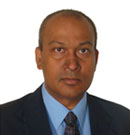 |
Short Course 1 13:00-13:40 |
|
Stand on the Antennas and Propagation Standards
×
Stand on the Antennas and Propagation Standards Vikass Monebhurrun Within the field of wireless communication, the IEEE 802.11 series of standards related to WiFi [1] is probably the most popular standarddeveloped by the IEEE Standards Association (IEEE-SA). This is certainly due to the fact that the IEEE 802.11 protocol is implemented in ubiquitous devices and WiFi is typically available everywhere. For many, standards development is often related to wireless communication protocols (from 2G to 5G) and to compliance assessment of the corresponding wireless communication devices. Actually, there exists a multitude of standards, recommended practices and guides for different applications and fields. In the field of electrical engineering, several international institutions develop standards which are usually enforced by regulatory bodies. And, although IEEE-SA develops voluntary standards (which could eventually be made mandatory), suchdocuments help establish harmonized engineering terminology, methods and practices elaborated through a consensus-based approach. In the field of communication, it is obvious that harmonization ensures that devices developed by different manufacturers can communicate with each other using a commonly defined and accepted protocol. Prior to the marketing of an electronic device, it is also important to ensure that it is compliant with regard to possible interference and safety which are addressed by electromagnetic compatibility standards.
Dr. Vikass Monebhurrun  (CentraleSupelec, France Chair IEEE Antennas & Propagation Standards Committee) |
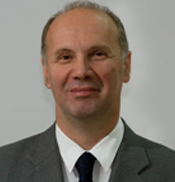 |
Short Course 2 13:40-14:40 |
|
Artificial Electromagnetic Structures and Associated Devices based on Active ‘Negative’ Elements
×
Artificial Electromagnetic Structures and Associated Devices based on Active ‘Negative’ Elements Silvio Hrabar More than fifteen years have passed from the introduction of the field of RF electromagnetic metamaterials. These are artificial structures, electromagnetic properties of which (permittivity and permeability) are not found in continuous, naturally occurring materials. Metamaterials have brought some novel intriguing physical phenomena such as negative refraction, sub-wavelength propagation, resolution-free imaging, just to mention a few. Unfortunately, the practical real-word engineering applications are still rather limited due to two basic problems: pronounced losses and a narrow operating bandwidth. This is the inherent drawback of all known passive metamaterials, caused by the basic background physics (energy-dispersion constraints), rather than used technology. The loss issue has been considerably softened by recent introduction of metasurfaces (the two-dimensional equivalent of metamaterials). However, achieving a large operation bandwidth is still a main obstacle in many applications, particularly in antenna technology. Prof. Silvio Hrabar  (University of Zagreb, Croatia) |
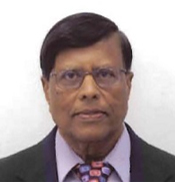 |
Short Course 3 14:40-15:40 |
|
Antenna Design on Complex Platforms by using Characteristic Modes, Eigenmodes and Characteristic Basis Functions Prof. Raj Mittra (University of Central Florida, USA) ※ In this lecture, all the participants will be given access to a website from which can download the notes. If you would like to access the notes, please bring your own laptop. |
Break Time
15:40-16:00
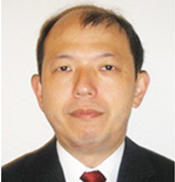 |
Short Course 4 16:00-17:00 |
|
Rectangular Coordinate Orthogonal Multiplexing Antenna System for Non-Far Region Communication
×
Rectangular Coordinate Orthogonal Multiplexing Antenna System for Non-Far Region Communication. Jiro Hirokawa This tutorial talk deals with the rectangular coordinate orthogonal multiplexing (ROM) antenna system for non-far region communication, which would be advantageous in comparison with OAM transmission using radio waves [1]. The OAM transmissionis based on the orthogonality in the cylindrical coordinate system. For the orthogonality in the circumferential direction, phase variations are used, which have typically a narrow band. The treatments in the radial and the circumferential directions are different. The OAM transmission was proposed originally in optics [2], where the normalized frequency bandwidth is almost negligible and the narrow-band operation is acceptable. However wireless systems in microwave and millimeter-waves sometimes requires a wide bandwidth of 10-20%, where conventional narrow-band OAM transmission would cause a problem.
Prof. Jiro Hirokawa  (Tokyo Institute of Technology, Japan) |
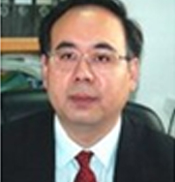 |
Short Course 5 17:00-18:00 |
|
Some Research Advances in mmWave 5G
×
Some Research Advances in mmWave 5G Wei Hong The standardization of sub-6GHz 5G mobile communications has been fixed in June, 2018, the spectrum allocation and standardization of millimeter wave 5G (mmWave 5G) is underway and is expected be finished in one or two years. Massive MIMO has been considered as one of the main enabling technologies of 5G, and multibeam array is the key technology of massive MIMO systems. In this talk, the recent research advances in multibeam arrays, ICs and systems related to mmWave 5G in the State Key Laboratory of Millimeter Waves (SKLMMW), Southeast University are reviewed. Prof. Wei Hong  (Southeast University, China) |

 HOME
HOME SNS
SNS CONTACT US
CONTACT US